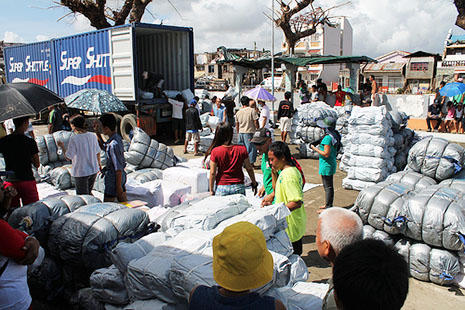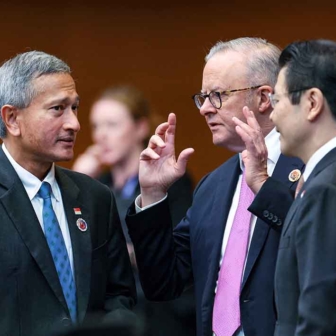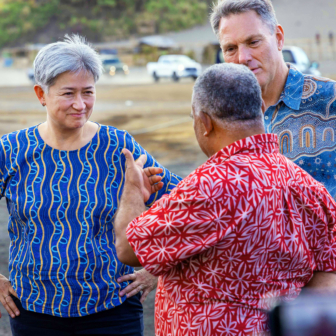TWO weeks after the strongest storm ever to make landfall hit the central Philippines, the impact of Haiyan is becoming clearer. A series of reports from the United Nations Office for the Coordination of Humanitarian Affairs has captured the devastation that the typhoon wrought, with over 10 per cent of the Philippine population affected, more than four million people displaced from their homes (and just one-in-ten of them finding safety in congested evacuation centres), and more than five million workers losing their means of livelihood. The task of rebuilding in areas that are affected will be herculean, especially in provinces that were already among the most impoverished before the typhoon hit.
The day before Haiyan made its first landfall, president Benigno “Noynoy” Aquino III appeared on national television to warn the public of the strength of the storm. Aquino noted the strength of the typhoon, its 600-kilometre reach and the potential for storm surges in three areas, Ormoc, Albay and Quezon, with waves expected to reach five to six metres. He reported that two cabinet secretaries, defence secretary Voltaire Gazmin and interior secretary Manuel Roxas, were already in Leyte to oversee preparations, and that equipment and goods had already been positioned in areas expected to be affected. He emphasised the need to take mitigating action to lessen the effects of the impending storm.
When it hit the following day, on 8 November, Haiyan’s wrath was unprecedented. Structures in Haiyan’s path – houses, shops, an airport, hospitals, evacuation centres, relief and operations headquarters, roads and bridges – were destroyed. Debris from fallen trees blocked roads and made the distribution of relief goods difficult. The number of casualties in one province alone, Leyte, was estimated by police to have reached 10,000, a figure that was disputed by President Aquino in an interview with an TV network. (The police chief concerned has since been relieved of his post.) At the time of writing, the death toll stands at over 5200, with countless bodies yet to be recovered or recorded. The fatalities are expected to exceed the highest number of any disaster in Philippine history.
Local governments in many of the areas at risk took routine measures to inform their population about the impending storm, but these weren’t sufficient to limit the toll. Had these towns forcibly evacuated residents – as was done in fatality-free San Francisco, in Cebu Province, whose population is about 1000 – the overall death toll would have been much smaller. But the task would have been enormous for the hardest-hit towns, where populations number in the hundreds of thousands and where facilities suitable for temporary shelter are inadequate.
The deficiencies of the local government response irked no less a figure than President Aquino himself. From his first visit to the devastated city of Tacloban, Aquino criticised certain local government officials for the delinquency that appeared to have resulted in the loss of more lives. But Aquino’s finger-pointing boomeranged, with critics pointing to his own failure to offer decisive leadership. The heads of concerned government departments – social welfare, defence, interior and education – remained on the ground to coordinate their own interventions, but Aquino’s absence may well have undermined efficient coordination of the relief effort. In response to these criticisms, the president travelled back to the affected areas on the second Sunday after the typhoon, but his stop-offs in the affected areas proved to be perfunctory and the question of who is in charge remains.
Haiyan revealed the weakness of the Philippines’ disaster response structures, in particular, and the state’s capacity to address collective needs, in general. We now know that the current administration, like its predecessors, has underinvested in lifting the capacity of local and national government to respond to disasters and mitigate their impact effectively.
The generous response of people within the disaster-affected areas and across the Philippines, and from people and governments across the world, has mitigated the impact of the uncoordinated government response. Stories of residents bonding together to look for loved ones, secure their remaining property or even build a makeshift court to play the country’s most popular sport, basketball, reflect how levels of trust and cooperation remain intact among survivors, so starkly different from the distrust and discord that afflicts the nation’s political elite.
Groups and individuals outside the disaster zone have sustained their fundraising efforts, participated in repacking relief goods, and come up with transport to get goods and services to affected communities. Several countries and relief organisations have responded to the UN effort to mobilise US$300 million in support of relief and rehabilitation efforts. In less than two weeks, the United Nations has been able to mobilise close to two-thirds of the target amount, with Australia prominent on the list of contributing countries. Beyond bilateral assistance, relief organisations have also collected a considerable sum to support the initiatives of their Philippine partners.
Thus, while government has shown its limits and the anticipated leadership from Aquino did not eventuate, those who survived Haiyan and those who assisted can anchor their optimism in the social capital rekindled by the tragedy. Such is the paradox of participation in a hobbled state. •




